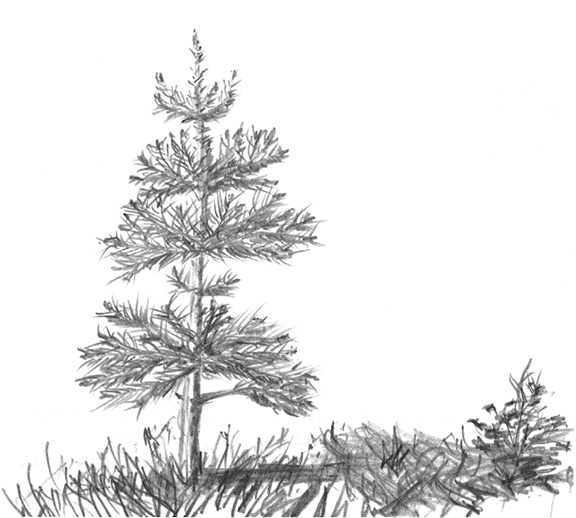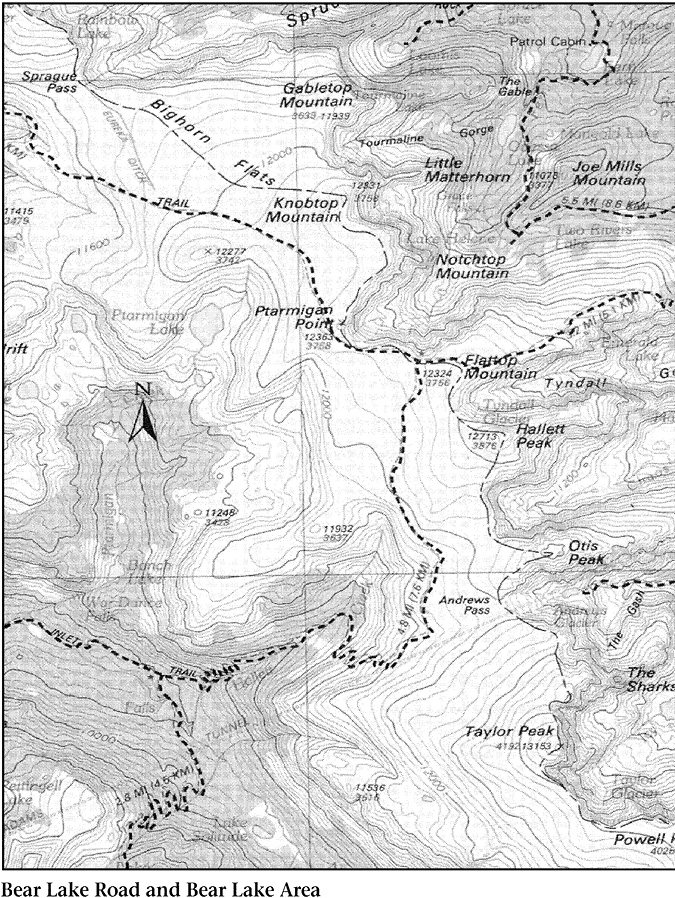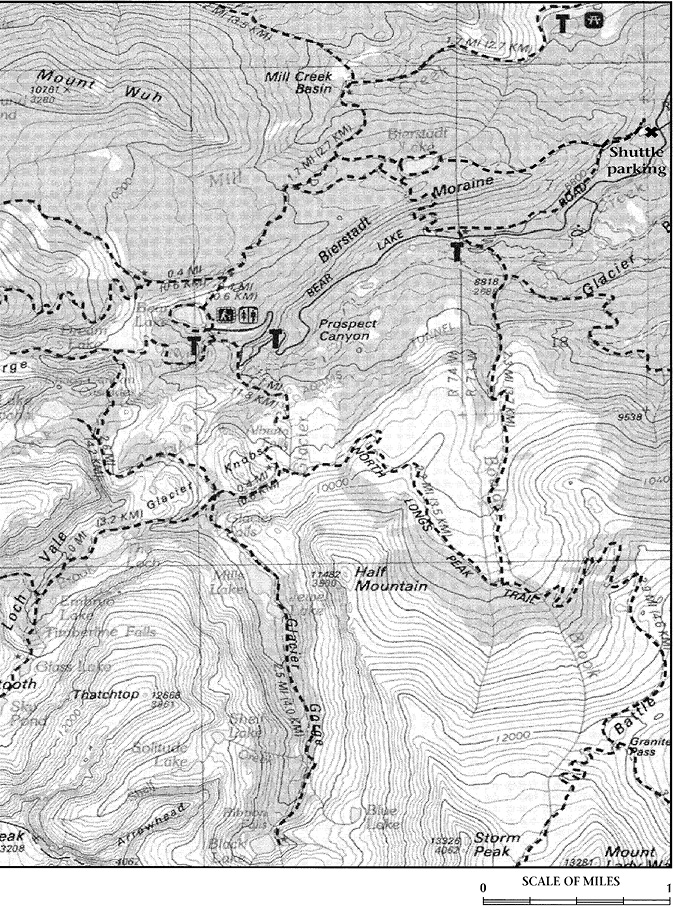Bear Lake Road provides access to one of the most popular areas in Rocky Mountain National Park. Various problems have resulted from this popularity. The most obvious, if not the most serious, is automobile congestion—the epitome of what a national park experience should not be.
The National Park Service strives heroically to deal with traffic congestion, but it is a complex problem because of the lay of the land and the distances involved. A mass transit system is the only way to save visitors from the battle against traffic jams on Bear Lake Road.

Pine along Bear Lake Road
During the hiking season, a bus route begins at a parking lot on an old gravel pit across Bear Lake Road from Glacier Basin Campground, 4.8 miles from the beginning of the road near the park’s Beaver Meadows entrance (see “Bear Lake Shuttle Bus Service,” page 21). Freed from their cars, visitors to Bear Lake and other points along the road can catch a free bus ride and save both fuel and wear and tear on their nerves. Check with the NPS for up-to-date details about the system.
Perhaps more than everyone else, hikers benefit from a mass transit system. We hikers and backpackers tend to be more upset by traffic problems than other park visitors. Part of the reason we walk into the backcountry is to escape infernal automobiles. It is menacing to have them snapping and growling and roaring and lunging after us right at the trailhead. Buses do much to ease our jangled nerves.
More important is the increased flexibility buses provide. With a mass transit system in operation, we can start at one trailhead and end at another. Buses make possible the very desirable one-way hikes that otherwise pose logistical problems. As a result, hikers are distributed more evenly instead of being concentrated at two or three trailheads.

